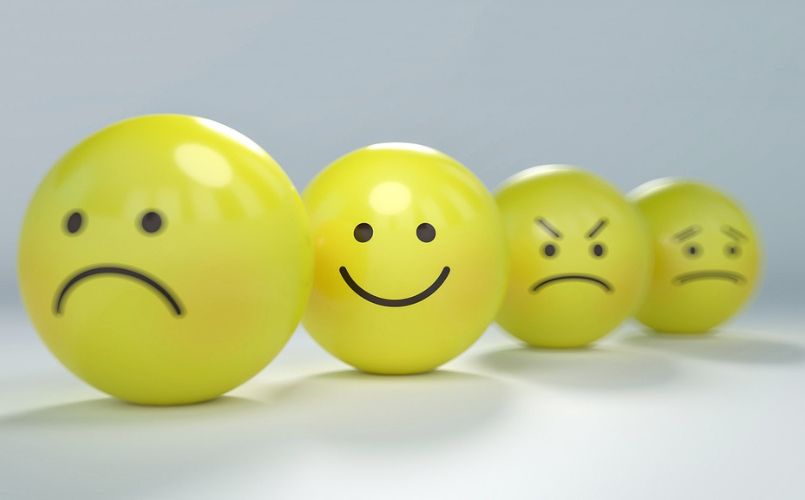Discovering the Potential of the Mood Mete
Unsettled behavior, Breakdowns in communication, Waning interest, Disputes, Resistance. Do these scenarios resonate with the dynamics of your classroom? Our students, much like us adults, traverse through a wide range of emotions every day. However, unlike us, they lack the necessary tools to recognize and navigate through these swirling emotions. As educators, our mission is to uncover methods to help students foster their social and emotional competencies with tools like Mood Meter.
The esteemed Yale Center for Emotional Intelligence has introduced an innovative approach to social and emotional learning (SEL), aptly named RULER. With its growing adoption in educational contexts worldwide, one of its central tools, the Mood Meter, has gained significant recognition. The Mood Meter is a structured four-quadrant grid designed to assist students in answering an essential question – How are you feeling?
So what exactly is Mood Meter?
Let’s take a moment to understand this intriguing tool a bit better. Picture a vibrant, color-coded square, neatly divided into four quadrants. Each quadrant, marked by a unique color – cheerful yellow, fiery red, soothing green, and cool blue, represents a distinct group of emotions.
Initiating our exploration, we have the Yellow Quadrant. This area signifies high-energy, positive emotions, akin to the euphoria of achieving a personal goal or the delight in sharing a hearty laugh with friends. It’s the dwelling of emotions such as joy, excitement, and enthusiasm.
Next in line is the Red Quadrant, embodying intense, high-energy, challenging emotions. Think about the agitation when a much-anticipated event gets canceled, or the frustration when an intricate problem refuses to be solved. This space houses emotions like anger, irritation, and stress.
Then comes the Green Quadrant, the place for low-energy, pleasant emotions. Picture a tranquil forest. The emotions here include calm when you’re peacefully doodling in your sketchbook, satisfaction after a hearty meal, contentment while watching your favorite show, and a sense of security when you’re at home, snuggled in your cozy bed.
Finally, we have the Blue Quadrant, the hub of low-energy, unpleasant emotions, just like a serene yet sad blue sky. You’ll find feelings like sadness when your pet is unwell, despair over losing a treasured item, disappointment when your summer vacation plans get canceled, boredom during a monotonous lecture, and the tiredness after a long, exhausting day.
In essence, the Mood Meter isn’t merely a tool but a powerful ally in your journey towards social emotional learning. It helps you recognize, understand, and communicate your feelings better, providing a foundation for empathy, decision-making, and effective conflict resolution. Exciting, right? Now, let’s take the next step and create our very own Mood Meter!
Creating Your Own Mood Meter
Ready to embark on an exciting DIY project? Let’s make your very own Mood Meter! This hands-on activity is not only fun but also a great way to reinforce your understanding of the concept. Plus, it’s super easy! So, let’s get started.
To create your Mood Meter, you’ll need the following materials:
- A large piece of poster board or chart paper
- Markers or color pencils in red, yellow, blue, and green
- A ruler and a pencil to draw neat lines
- A list of emotion words for each quadrant
Begin by drawing a large square in the center of your poster board using your pencil and ruler. This square will serve as the main body of your Mood Meter. Now, divide this square into four smaller squares or quadrants with two lines intersecting in the center.
Next, it’s time to add a splash of color to our Mood Meter. Remember, each quadrant represents a different type of emotion, and we’re going to color-code them:
Red Quadrant (High Energy, Unpleasant):
Color this quadrant red. It captures those intense, fiery emotions such as anger, frustration, jealousy, and tension. It’s important to remember that having emotions that fall in this quadrant is completely natural – it simply means we’re human!
Yellow Quadrant (High Energy, Pleasant):
This quadrant gets a sunny yellow. It’s where your happy, excited, joyful, and thrilled feelings live.
Blue Quadrant (Low Energy, Unpleasant):
Color this quadrant blue. It’s the home for feelings like sadness, disappointment, boredom, and tiredness. Remember, it’s completely okay to be in this quadrant, too. After all, we all have our blue days.
Green Quadrant (Low Energy, Pleasant):
Lastly, color this quadrant green. It’s the space for feelings such as calm, satisfaction, contentment, and security.
Now, it’s time to label each quadrant with emotion words that match each category. For example, you might write ‘elated’ and ‘enthusiastic’ in the Yellow Quadrant, ‘irritated’ and ‘anxious’ in the Red Quadrant, ‘serene’ and ‘comfortable’ in the Green Quadrant, and ‘dejected’ and ‘gloomy’ in the Blue Quadrant.
And there you have it! Your very own, personally crafted Mood Meter is ready. Keep it in a place where you can easily see and use it. Now that you’ve created this magnificent tool let’s uncover how you can use it to boost your social emotional learning.
Congratulations! You now have your very own Mood Meter. Now let’s explore how to use this fantastic tool in your day-to-day life and learn some engaging activities that can make this journey even more fun!
First, make it a habit to check in with your Mood Meter a few times a day. Begin by identifying the general feeling – are you feeling pleasant or unpleasant? Energetic or low-energy? Once you determine that, dive a bit deeper. What is the exact emotion you’re feeling? Use the words in your Mood Meter quadrants to help you identify it.
For example, if you’re feeling pleasant but low-energy, you might be in the green quadrant, experiencing feelings like contentment or tranquility. If you’re feeling unpleasant and high-energy, you could be in the red quadrant, experiencing feelings of frustration or annoyance.
Mastering the Mood Meter: How to Use It and Fun Activities
Now that we have a handle on using the Mood Meter, let’s spice things up with some entertaining and enlightening activities that reinforce social emotional learning:
Emotion Charades:
Gather your friends or family for a game of Emotion Charades. Just like regular charades, but instead of miming a movie or a book, you enact an emotion! The others guess the emotion and plot it on the Mood Meter. It’s not just fun but also a fantastic way to understand and empathize with a wide range of emotions.
Mood Meter Journal:
Dedicate a small notebook as your Mood Meter Journal. Twice a day, plot your feelings on the Mood Meter and jot down why you might be feeling that way. Over time, you’ll see patterns emerge, helping you understand your emotional triggers better.
Storytime with Mood Meter:
While reading a book or watching a movie, identify the emotions that different characters experience and plot them on the Mood Meter. It’s a great way to develop empathy and understanding towards others’ feelings.
Art from the Heart:
Draw or paint pictures that represent different emotions and place them in the corresponding quadrant on your Mood Meter. This can be a calming and cathartic activity, especially on tough days.
The Mood Meter is your reliable buddy in the adventure of social emotional learning. Remember, every emotion, be it joy or sorrow, peace or frustration, is an integral part of being human. Embracing and understanding these emotions can empower you to navigate life’s ups and downs confidently.
So, go forth, and explore the colorful landscape of your feelings with the Mood Meter! As you do, you’ll find yourself becoming more emotionally intelligent, empathetic, and ready to take on the world!
Phew! We’ve made quite a journey, haven’t we? Remember, it’s perfectly okay to have a rainbow of emotions. It simply means you’re human and each color adds a unique touch to your personality. Now, who’s ready for some Emotion Charades?




